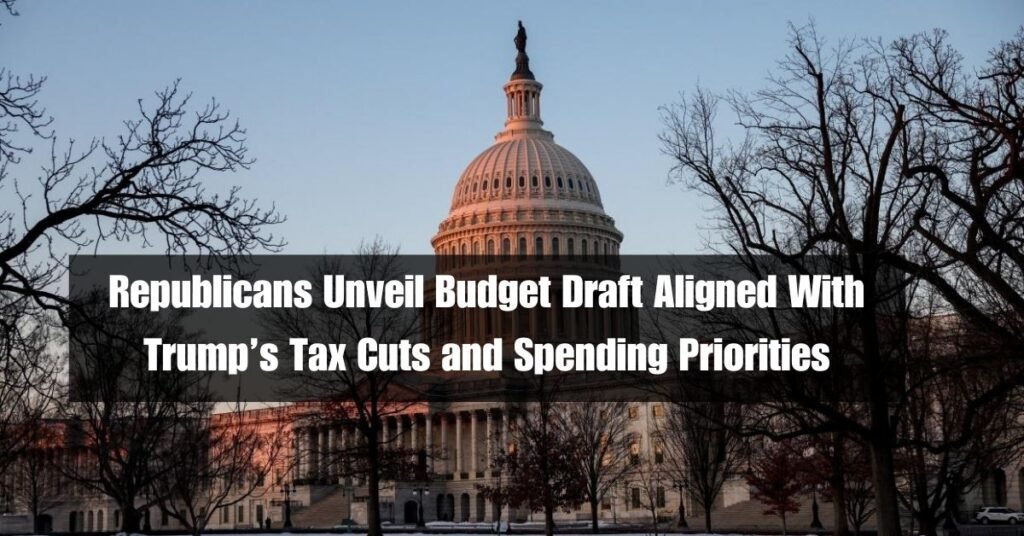In a major fiscal development that could reshape America’s economic future, Republicans in Congress have introduced a draft budget plan firmly rooted in former President Donald Trump’s tax and spending agenda.
A Renewed Push for Trump’s Economic Vision
In a move that reignites Trump-era economic priorities, Congressional Republicans have released a sweeping draft budget package aimed at cutting taxes and slashing federal spending. The proposal, if passed, would realign national fiscal policy around conservative principles of limited government, deficit reduction, and pro-growth tax reform.
- “This budget is about putting American taxpayers first and reigniting the engine of the U.S. economy,” said a senior GOP aide involved in the drafting process.
Key Objectives of the Trump-Aligned GOP Budget
- Trump-Style Tax Cuts to Stimulate Growth
At the core of the budget blueprint lies Trump tax reform 2025, aiming to:
- Lower personal income tax rates, particularly for middle-income households
- Reduce corporate tax burdens to incentivize domestic investment
- Simplify the tax code to make compliance easier for businesses and individuals
While exact brackets remain under negotiation, early reports suggest the proposal could include a reduction of the top marginal rate and expansion of standard deductions—moves reminiscent of the 2017 Tax Cuts and Jobs Act.
- Aggressive Federal Spending Cuts
In line with Trump’s longstanding call for leaner government, the proposal includes:
- Discretionary spending cuts across several federal agencies
- Potential entitlement reform targeting programs like Medicaid and SNAP
- A plan to cap annual spending increases, reducing long-term obligations
Fact Check: According to the Committee for a Responsible Federal Budget, such cuts could reduce the national debt by $3 trillion over the next decade, if implemented as proposed.
Pending Details & Intra-Party Negotiations
Despite outlining its fiscal pillars, the GOP budget draft leaves several key questions unanswered:
- Which tax brackets will be modified?
- What departments face the deepest cuts?
- How will healthcare, education, and social programs be impacted?
This lack of clarity sets the stage for tense negotiations between moderate Republicans, fiscal hawks, and Democrats. Already, some Republican lawmakers from swing states like Pennsylvania and Ohio have voiced concern about potential impacts on constituents.

ALSO Read: “President Vows Executive Order to Lower Prescription Drug Prices: What It Means for You
Impact on States: Winners and Losers
Potential Winners:
Texas and Florida: Business-friendly tax changes could accelerate job growth.- Wealthier districts: Tax reductions may boost investment returns.
Potential Losers:
- Midwestern rural areas: SNAP and Medicaid trims could disproportionately affect low-income residents.
- New York and California: Cuts to federal aid may hit healthcare and education programs hard.
Regional Angle: “This plan may save Washington money, but it could cost my state billions,” said a California representative.
Political Ramifications Ahead of 2026 Midterms
The draft budget is expected to become a defining issue in the lead-up to the 2026 midterm elections. Democrats have already launched a counteroffensive, framing the proposal as a “gift to the wealthy” at the expense of ordinary Americans.
Meanwhile, Trump 2024 campaign surrogates are championing the budget as a return to fiscal sanity and job creation.
Global Reactions and Economic Outlook
The budget plan has drawn international attention, especially from economic observers in Canada, the UK, and South Africa, where analysts are watching its potential to:
- Impact global markets through shifts in U.S. spending
- Influence international tax competition
- Alter global economic confidence in U.S. fiscal leadership
Conclusion
A Pivotal Moment in U.S. Fiscal History
This draft budget represents more than just policy—it symbolizes a strategic attempt to resurrect Trump-era economics and solidify the GOP’s fiscal identity. With contentious negotiations ahead, the fate of the proposal will test the limits of bipartisan compromise, public tolerance for austerity, and America’s appetite for another round of supply-side reforms.